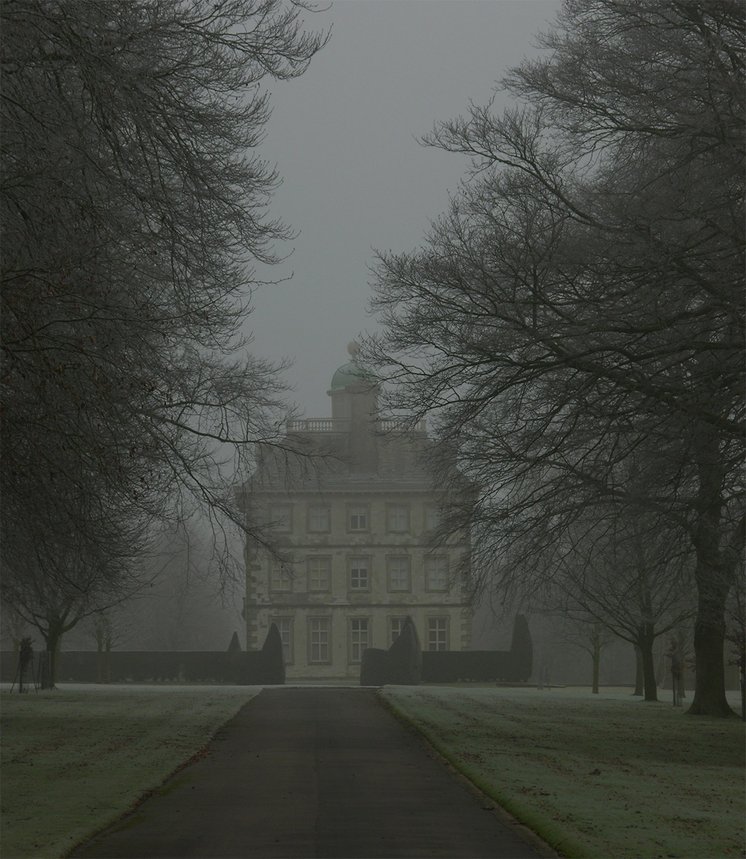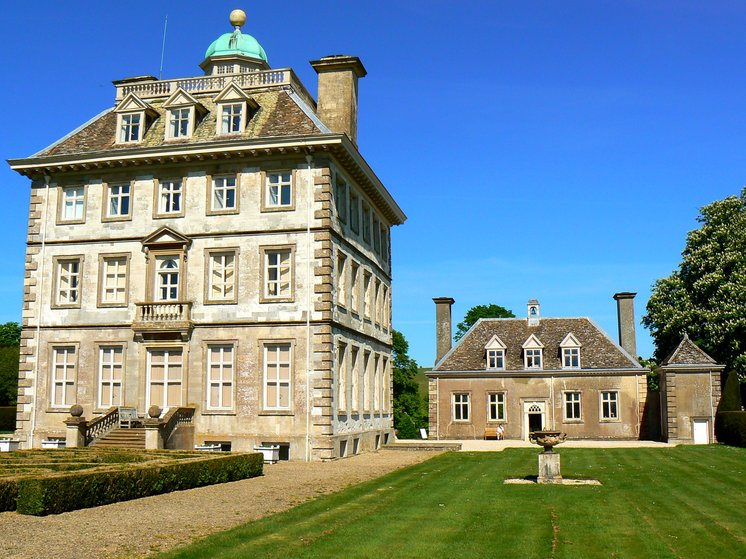Ghosts of Ashdown House
24 October 2025
Ashdown House on the Oxfordshire/Berkshire border has been charming visitors since the 17th century. But it's beautiful dollhouse-like appearance and majestic landscaped parkland hides a dark history of tragedy, death and ghosts, so many ghost!
The origin of Ashdown House
Ashdown House was built by Lord William Craven (1608–1697) for this close friend Elizabeth Stuart, also known as Elizabeth of Bohemia or the Winter Queen. The house was to be a hunting lodge as Elizabeth shared Craven's passion for hunting.

Photo: "Ashdown House" by Giles Watson's poetry and prose, licensed under CC BY-SA 2.0.
Sadly, Elizabeth never lived to enjoy Ashdown. In 1662 she caught pneumonia and died at her London home before building work was completed. Although greatly saddened by Elizabeth's death, Lord Craven went ahead with his plans and used Ashdown to host hunting parties.
The estate passed down through the Craven family until 1926, when the last Craven left Ashdown, and the property was given to the National Trust in 1956.
William and Elizabeth: lovers?
There's been much debate over whether William Craven and Elizabeth Stuart were romantically involved.
William was a lifelong bachelor with almost limitless wealth. Elizabeth was the exiled widow of Bohemian monarch King Frederick V who William supported financially for over 20 years, and planned to build lavish country houses for her.
The pair lived together at William's London home for many years, a highly unusual arrangement for a high-profile unmarried couple at the time! They were clearly devoted to each other, and on paper seemed a perfect match.
And yet there's no evidence that they were ever more than friends. Some historian have speculated that the pair may have been married in secret, but why the need for secrecy? The true nature of their relationship seems destined to remain a mystery.
Lord Craven's ghost at Ashdown
Ashborn House's most famous ghost is unsurprisingly the man who built the house, Lord William Craven. Although considered something of a dandy and a social butterfly in his youth, Lord Craven seems to have declined in his later years and became a rather sad, reclusive figure.
The dishevelled ghost of Lord Craven, usually wearing his faded and much-patched dandy attire, has been seen in a number of locations throughout Ashdown's house and grounds.
Mike White in The Veiled Vale reports that one brave soul encountered Craven's ghost pacing the park at Ashdown and followed the ghost back to the house, where it let itself inside and sat down in front of a fireplace.
Craven's ghost has also been in the ballroom, dancing as if with an invisible partner on his arm. He has also been seen seated at a dining table as if entertaining a large party of invisible guests.
It's hard not to see Craven's ghost as a rather sad figure, perhaps reliving his glory days or dreaming of a lost love who never got the chance to enjoy Ashdown with him?

Photo: "Ashdown House and its south lodge, Lambourn - geograph.org.uk - 1874182" by Brian Robert Marshall, licensed under CC BY-SA 2.0.
Other ghosts of Ashdown
Many others have reported ghostly or unexplained encounters at Ashdown. Novelist Nicola Cornick reported seeing a female figure looking from an upstairs window and then seeing lights moving as if someone was carrying a candle or lamp from room to room. Cornick later realised that the windows were in fact all shuttered, and could not explain her strange vision.
Another visitor claimed to have encountered a woman in 17th century dress inside the house, who addressed her with the cryptic words "I'm so glad you're back" before disappearing!
Many have speculated that the ghost could be that of Elizabeth Stuart, whose portrait can be seen on the main stairs. However, it should be remembered that Elizabeth died before the house was built, so for her to haunt the property would be highly unusual, even by ghost standards!
The main house is said to be troubled by doors which open or close themselves, including the large front door which have been known to startle tour groups by unexpectedly opening of its own accord.
The stables are said to be haunted by the ghost of a groom who hanged himself from the rafters during the Victorian era.
There are also rumours drifting around online that the woods close to the house are haunted by the crying of an unseen child, although no explanation is offered as to the child's identity.
Ghostly nuns or a haunted mix-up?
I've read accounts of ghostly nuns haunting Ashdown, but these are accompanied by claims that there was a religious establishment on the premises at one time, which as far as I can tell has never been the case. I think it's possible that people are mixing up Ashdown House in Oxfordshire, with Ashdown House in East Sussex, a country house-turned prep school that dates from a similar period.
Sources
- 'The Veiled Vale' by Mike White (Two Rivers Press, 2016, ISBN: 9781909747173)
- Ghosts of Ashdown Past (ashdownhouse.blogspot.com)
- The Winter Queen and the history of Ashdown House (www.nationaltrust.org.uk)





